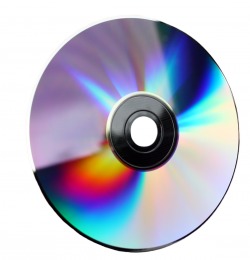Types of Storage
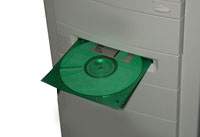
Floppy Disks-The popular 3.5 inch floppy has two types: the double-density (DD) disk that can store about 800 KB and the high-density (HD) disk which stores 1.4 MB of data (equivalent of 700 pages of text). Almost obsolete. Remains in some synthesizers.
Optical disk drive systems are the standard for storage data. An optical systems use lasers to read and write data. Examples of these would be CD-ROM, CD-R, CD-RW, DVD.
A CD-ROM drive uses standard compact discs for data storage
Can store 650 MB of information, or the equivalent of over 300,000 pages of text.
When used for music or sound, a CD can hold up to 74 minutes of stereo audio.
CD-ROM drives can play both computer CD-ROMs and standard audio CDs.
When dealing with computer data, most CD-ROMS can spin at a faster rate, allowing for quicker transfer of data. -Hence, the speed of a CD-ROM drive is rated by the number of times faster it spins compared to a single speed CD.
For example, a 24x CD-ROM spins at 24 times the base speed.
When in the audio mode, it must spin at the normal slower speed or else the pitch of resulting sound would be altered.
CD-R/CD-RW
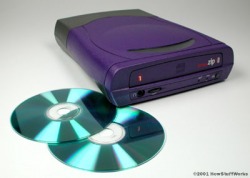
A CD-R drive allows the average user to burn their own computer data or audio CDs. It allows the user to write to a CD but only once.
A CD Rewritable (CD-RW) drive allows the user to erase discs and reuse them, but the resulting disc doesn’t work in some players.
DVD
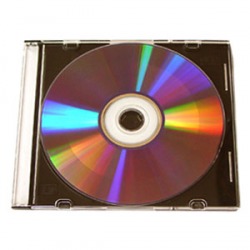
The DVD (Digital Versatile Disc) format uses discs that are the same size as CDs, but the pits are smaller and the tracks are more dense resulting in the ability to store considerably more data.
Currently a DVD can store 4.7 GB of information, over 7 times that of a standard CD.
Some DVDs are two sided, two layer and store 17GB.
Because of their large capacity, DVDs have also become the standard for consumer movies and have replaced video tapes for movie playback. DVD drives can also play CD-
ROMS and audio compact discs.
DVD recorders/drives are now becoming popular to record pictures and movie data and are formated in much the same way as CDs.
For example: DVD-R, DVD+R, DVD-RW
Flash Storage
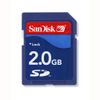
Removable Flash Memory disks have much larger capacities and are able to read and write information faster than other formats.
Have become popular due to its size and ease of use in transferring data.
USB
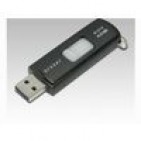
Electronic memory comes in a variety of forms to serve a variety of purposes.
Digital cameras, video game consoles and computers.
It is used more as a hard drive than as RAM.
CompactFlash (found in digital cameras).
SmartMedia (found in digital cameras and music keyboards).
Memory Stick (most often found in digital cameras).
USB memory cards (used as solid-state disks in laptops).
Memory cards for video game consoles.
